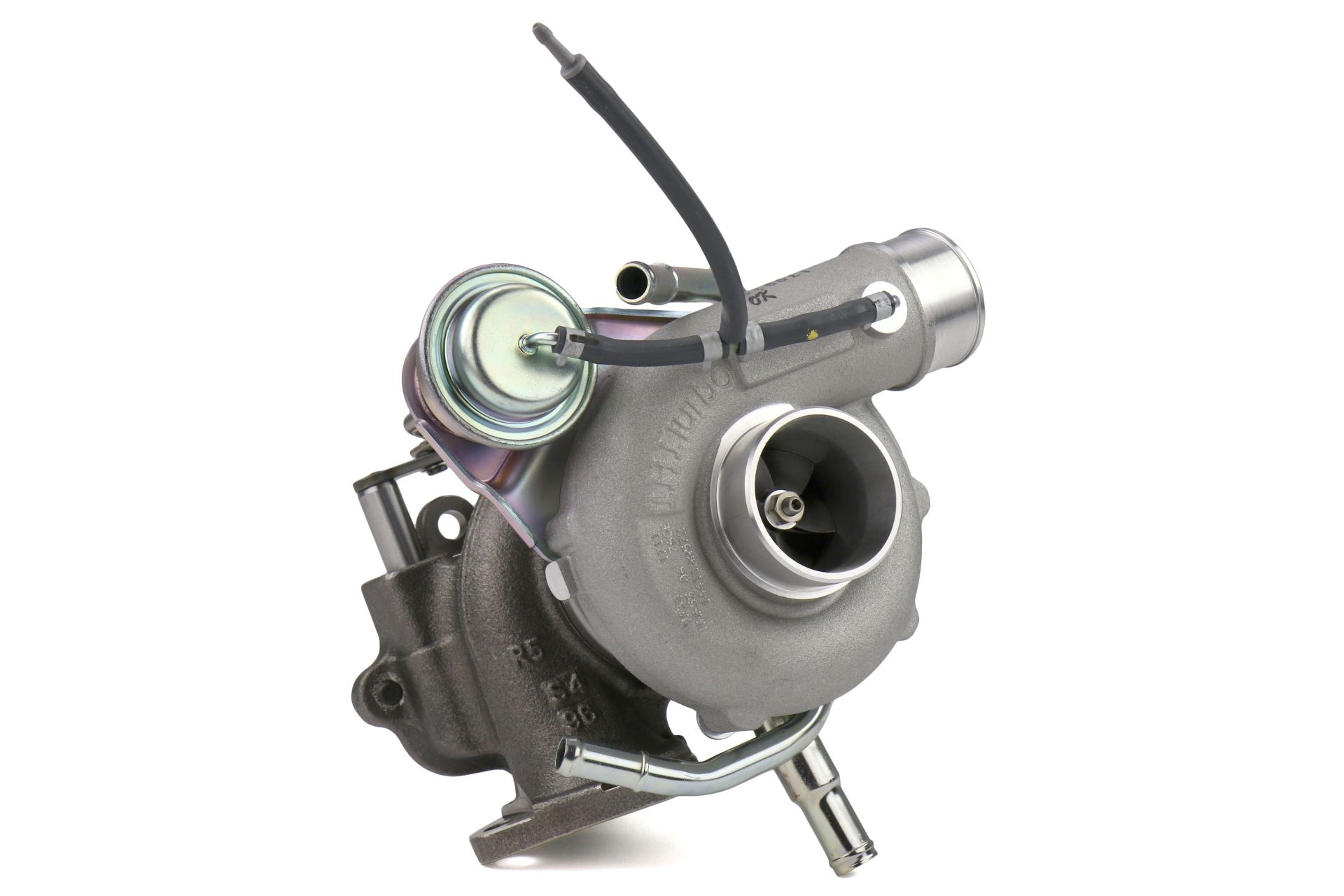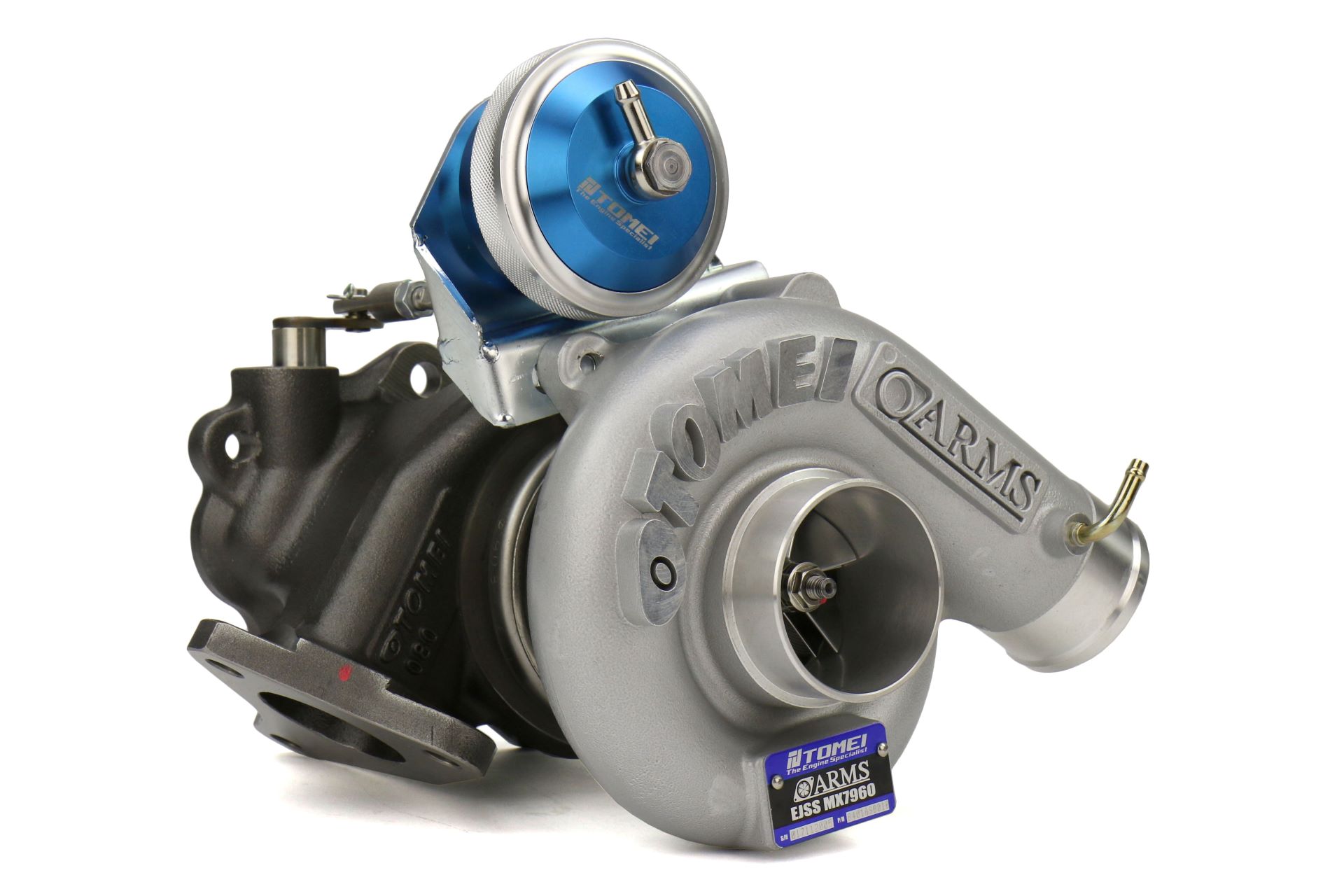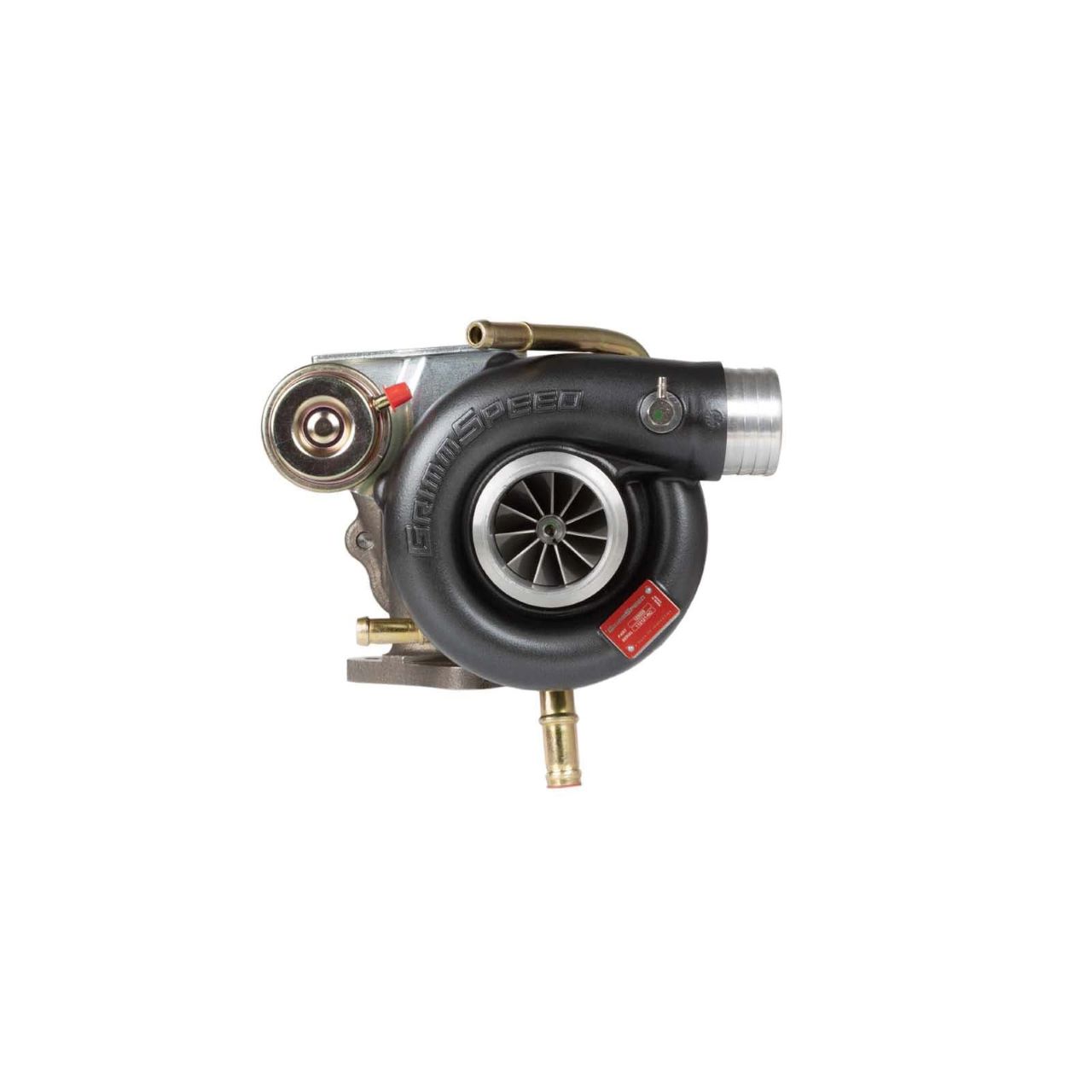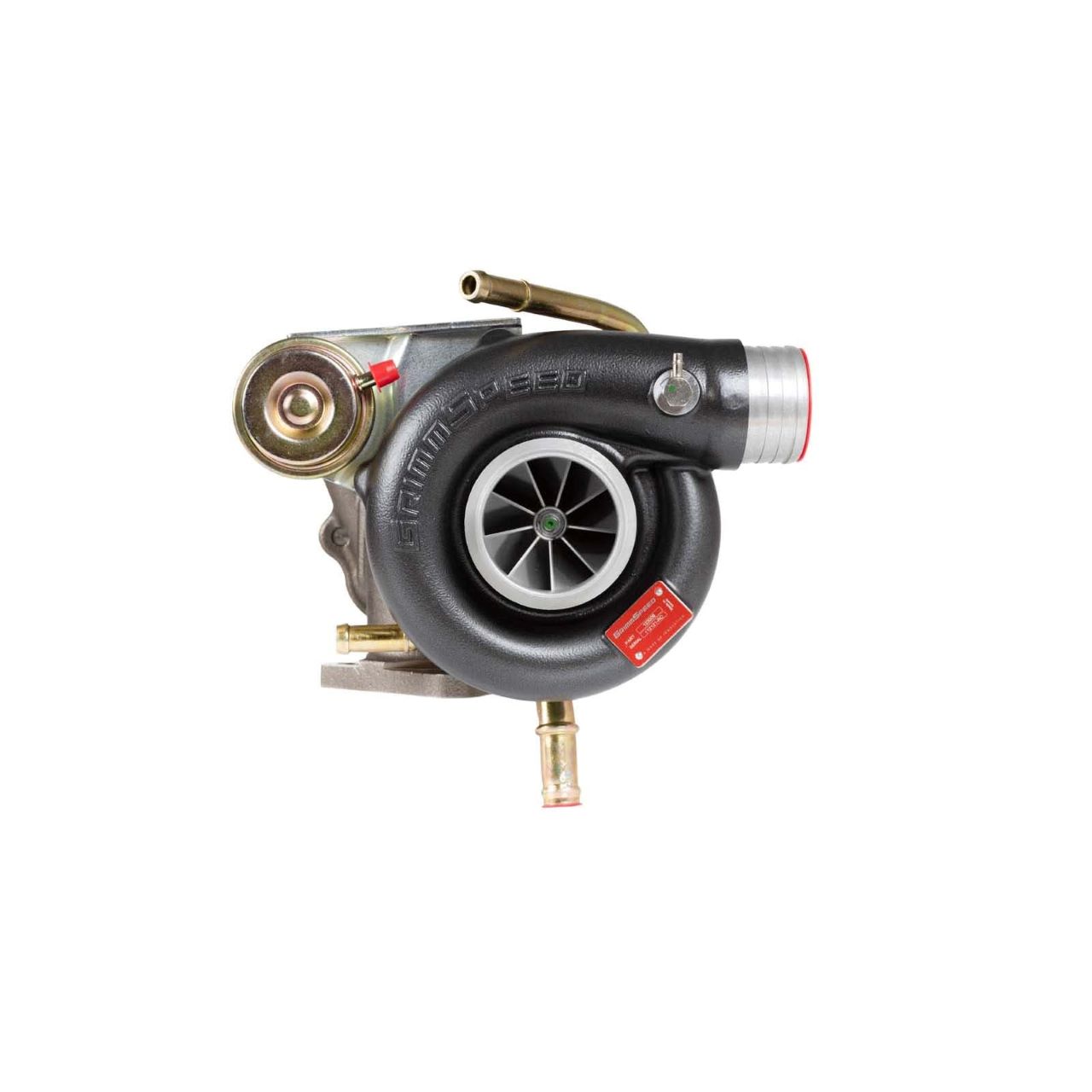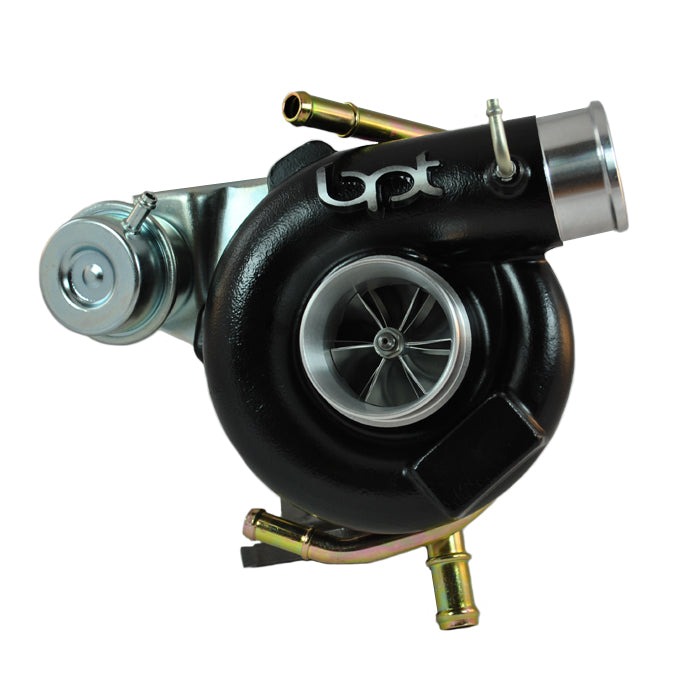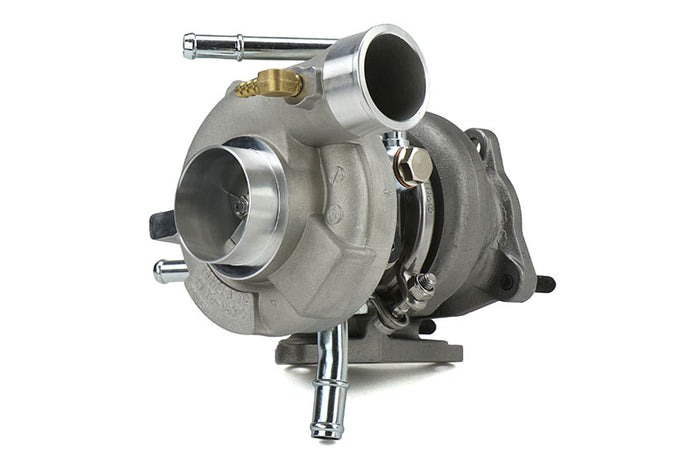Is It Turbo Time For Your Subi?
6 NOV 2024 - Jeff Willis
If you drive any turbocharged Subaru, chances are that you have modded it in one fashion or another. The typical “Basic Performance Upgrades” in a Subaru WRX or STI will include a COBB Accessport, a catted downpipe, an intake, a higher flowing fuel pump, and a cat-back exhaust system. If you drive a STI, these mods on an otherwise well-sorted, well-maintained car with a healthy engine can make 350+ wheel horsepower. Now like most of us who enjoy turbo noises, the thrust of when boost kicks in, we know how addicting this feeling is. Combine that with our inner egos when a challenger taunts us, said egos can get bruised if you lose badly to a race at the drag strip or at another ‘sanctioned’ event. Now this is where things can really get out of hand. Particularly for Subarus in general. Rod Knock has been jokingly synonymous with Subaru’s flat-four engines. But in all reality just like any other modded vehicle, the Subaru has its limits.
Seasoned owners and enthusiasts know exactly what this means because they have had to shell out the substantial amounts of money to replace the engine. Because for many who have invested that money, they have done so by pushing the limits a little too far. Lesson learned.
Now the mentioned basic performance upgrades are common among all modded Subarus. For many of you, you may have a flex fuel system, with bigger injectors, two fuel pumps, and the rest of your ethanol-friendly fuel system upgrades to run more boost. As long as your Accessport, standalone, or flash tune is safe, then you should be fine within a certain resposibility. There are many other factors that can lead to Subaru’s infamous rod knock issues such as lack of maintenance. If you don’t change the oil on a regular basis, it accelerates engine wear.
What puts you in the danger zone is running a bigger turbo beyond the limits of what a Subaru engine can handle. For an STI, 400 WHP is about the limit until you really start stressing things out. Now the WRX has been here since 2002 and the STI it’s been since 2004. So many of you would have either replaced the turbo at some point, or you simply want to upgrade. Because after all, most of the BPU upgrades make the turbo work harder because you are hitting a higher boost limit from OEM, and modded cars naturally make us drive harder as well. We like those blow-off valve noises.
Just ask yourself one simple question. Do you have a stock engine, or not? The majority of us will have stock engines, and some of you may have purchased a built IAG short block or had your short block built with forged pistons and rods. Forged pistons and rods are stronger, they can endure more heat, which means that they can handle more boost. The point of all of the above (4) paragraphs, is when you need to replace or upgrade your turbocharger, be methodical about it. Do you want to enjoy your Subaru? Or do you want your mechanic to enjoy your Subaru?
COBB TD05H-20G-8 Turbocharger 2008-2021 STI
Here at SubiSpeed, we done have 4 pages of turbochargers on this here website. But be sensible on what you choose from. If you have a short block made to handle 600+ HP and you have the proper fuel mods in place and you’ve got a track-dedicated race car or rally car, by all means, turn that boost up to your discretion. For this article, we are going to be more focused on those of you who either need to replace your OEM turbocharger, or who simply want a sensible upgrade without getting too out of hand. Educate yourself on what it takes to run more power and more boost. And there are many factors that can make or break your horsepower numbers such as your tune, your elevation, the type of fuel you’re using such as pump or ethanol. And most importantly the overall welfare of your engine. If you are not hitting your target boost levels, it might not always be a bad turbo. You could have a boost leak which means that air is escaping through a loose intercooler hose, an old and torn vacuum line, or a weak blow-off valve.
What are signs of a bad turbo? Here are a few things to look at:
- Excessive Smoking - This is where oil is leaking past the shaft piston and into your exhaust housing. Additionally, a leaking shaft piston on your turbo shaft could push oil out of the compressor side, making oil go into your intercooler pipes.
- Excessive Shaft Play – If the compressor wheel has too much back and forth and side to side play, Too much shaft play will result in your compressor or exhaust blades of the turbocharger to make contact with the compressor or exhaust housings of the turbocharger. Now obviously this would prevent your shaft from spinning at full capacity not allowing you to hit your boost targets, but eventually once there is enough wear, your turbo will grenade itself.
- Damage To the Compressor Wheel – The tiniest chip on your compressor wheel doesn’t seem like a big deal, right? Here’s the thing, the compressor wheel spins at such a high RPM that the tiniest of chips can cause an imbalance. The imbalance further increases shaft play. Any spec of dirt, any debris, or even filter element from a cheaply made cold air intake filter can break off causing damage to your compressor wheel. Make sure that before installing your intake, or if you upgrade your inlet tube, make sure it is 110% clean.
- Overboosting – Running way too much boost than what your turbo can handle will overspin the turbocharger. This is actually really dangerous especially if you have a tune. While overspinning a turbocharger, your tune gets in this weird grey area where your combustion cannot keep up with the forced induction that the turbocharger creates. What happens is that in the tune while in the ‘overspinning zone’, your motor can go lean creating excessive cylinder pressure. When this happens, the cylinder wall could crack, leaving you with a broken motor as coolant will then enter your oil. Now this issue is more prevalent in high-horsepower applications, with a smaller stock-sized turbocharger, you will just blow up your turbocharger first.
And it is completely normal for turbochargers to wear out. Did you know that the most expensive aftermarket turbocharger brands have a shelf life of under 10K miles especially if they are used in high-horsepower situations? The bigger the turbo, the more air it will flow, the more power it will make, and the more heat it will produce. If you have a fully built forged motor with larger injectors, standalone ECU, running super high horsepower on ethanol, this means that you are running your car hard in time attack, drag racing, standing ½ mile events, and roll racing. When you are flowing high amounts of air and boost, larger turbochargers are more subjected to accelerated wear and tear. And remember with racing, no matter how expensive your turbo or build is, there are no warranties.
BE RESPOSIBLE OR ELSE
But coming back to reality. For those of us that have a WRX or STI and we use these cars as daily drivers, we need to be sensible. If you want to upgrade your turbocharger to make more power and boost, you need to make sure that you have all safety nets in place. This means that if you are trying to hit that 350 to 400 WHP ceiling in terms of reliability – remember you can make as much power as you want but it will come with consequences. In terms of reliability, you need to make sure your fuel system can deliver the fuel needed with upgraded fuel pumps, injectors, rails, and all with PTFE lines if running ethanol. You need to make sure that you have a solid tune. This means that you have a proper off-the-shelf MAP from your Accessport. Or of you have a flash tune or standalone for a track car make sure that your tuner isn’t adding too much timing and too much boost just to make a braggable number on the dyno. Engine builds are not cheap. Whether if you buy a fully assembled block from IAG or you pay a mechanic to disassemble your short block and send the block and heads to a machine shop to get all new guts, and all new valvetrain, the labor and time is costly.
Now further disclosure as 99% of the turbo options we carry are rated for more power and more horsepower, it’s completely okay to do these upgrades, just make sure that you don’t have the boost turned up to the turbo’s full potential. We want you to keep your Subaru on the road.
With that being said, let’s look at a few turbocharger options that may be suitable for those of you who need a replacement that is bolt-in, and we will have OEM and performance options that you can choose from:
Subaru OEM IHI VF39 Turbocharger 2004-2006 STI
Tomei Arms MX7960 Turbocharger 2015-2021 STI – Rated to 400 HP
GrimmSpeed CHASE JB400 Turbocharger Kit 2002-2007 WRX / 2004-2021 STI - Rated to 440 HP
GrimmSpeed OVERTAKE BB500 Turbocharger Kit 2002-2014 WRX / 2004-2021 STI Rated to 480+ HP
Blouch Performance TD05H-16GXT 8CM w/Billet Wheel 2015-2021 STI – Rated to 410 HP
ETS Turbo Kit (Precision Gen 2 6466) 2015-2021 WRX – Rated to 600+ HP
With turbo upgrades we have mild options, and options that can flow over 600 HP. With whatever you choose, just consider how you will use your Subaru. Remember the bigger the turbo, the more turbo lag you will have. A great turbo upgrade will be something that can flow 400+ HP, that still spools with OEM-like characteristics. Having a 400 HP STI with all of the right supporting mods makes for a very fast street car. But again, be sensible about it. Be sensible that you’re not doing back-to-back-to-back hits not giving your engine a chance to cool down. But more importantly, give your engine a chance to live.

